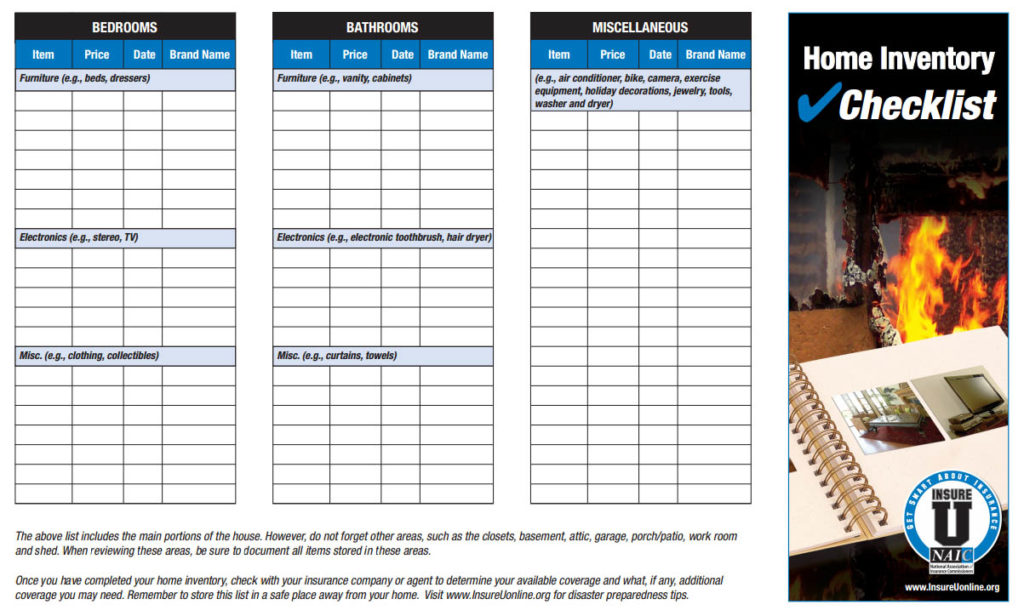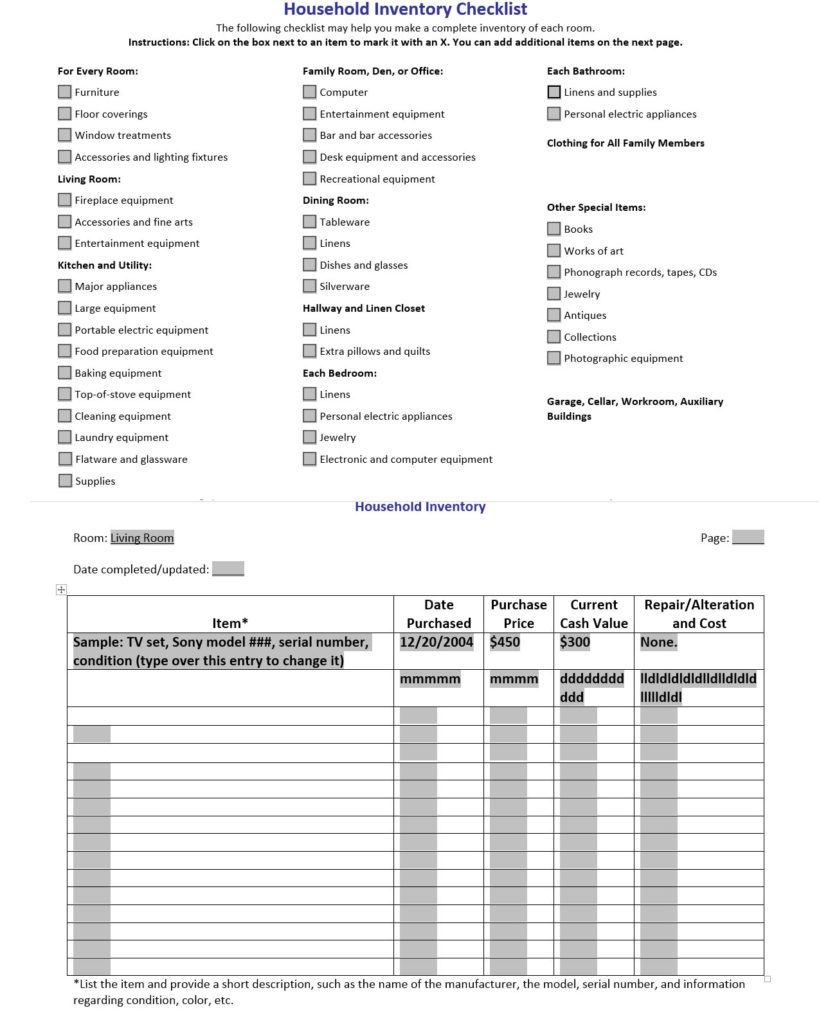Inventory my belongings?
September 14th, 2016If a fire destroyed your home, would you be able to remember the estimated value and age of all your possessions for insurance purposes? Yea, me neither! Since September is National Preparedness Month, I started an inventory of my personal belongings. It’s important as it provides an accurate record of a homeowner’s possessions, helps process insurance claims faster, and helps one purchase the correct amount of insurance. The inventory is critical to document losses due to fire but also to other causes such as flooding, burglary, and vandalism.
Below I review three recommended methods to inventory one’s belongings. While there may be other options, the important thing is to pick one and become prepared during National Preparedness Month!
A representative from the Nevada Division of Insurance recommended utilizing either a free smart phone app or a PDF inventory sheet created by the National Association of Insurance Commissioners (NAIC). In addition, the Living With Fire (LWF) Program also has a more detailed inventory sheet.
Both the smartphone App and PDF inventory sheet can be found at the following link: http://www.insureuonline.org/insureu_special_disaster.htm
One can always install the app on their smart phone by searching for Scr.APP.book (see above). The app’s interface is very user friendly and makes it easy to upload photos. Once the app is installed, click the icon, “ADD ITEM” and complete the screen (see above). One can take multiple photos of the item by clicking the camera button at the top, taking a photo and then clicking “OK”. The information entered on the form can be retained by clicking the save button. To view the items already input into the form, click the item list and edit information if necessary. An individual form must be completed for each item in the home. This information can then be exported from the app to be e-mailed, or saved to a computer or flash drive. Additionally, there are tips and resources on the app to connect to the NAIC and become more informed regarding advisable insurance coverage.

A screenshot of the National Association of Insurance Commissioners home inventory checklist PDF
The PDF inventory sheet is also easy to use but, unlike the app, users must first print the form, record the information by hand and attach separate pictures to the inventory sheet (see above). Each item’s information such as item identification, price, date purchased, and brand name must be entered on the form for each separate room. The completed form along with photographs can then be retained as a hard copy. Users must remember to keep the inventory sheet and photos separate from the house. This ensures that in the event of a disaster, the inventory sheet is not destroyed along with the house. Here is a direct link to print the inventory checklist:
http://www.insureuonline.org/home_inventory_checklist.pdf

Above is a view of the My Household Inventory Checklist by the Living With Fire Program
Unlike the NAIC form, item information can be entered and edited directly on a computer and can be saved to a drive, thumb drive, etc. (see above). This inventory sheet asks for more information than the NAIC options, BUT also provides users with a more detailed inventory of belongings. The inventory sheet suggests considering items that I normally wouldn’t have, including silverware, clothing, tools, and recreation equipment. The LWF Program inventory also explains how to calculate the current cash value of items and recommends including this as part of the record. While calculating the current cash value of each item isn’t necessary, it helps to estimate the item’s worth for insurance reimbursement purposes. As with the NAIC PDF inventory sheet, pictures must be taken of the items and attached or saved to the PDF. To download this method, click here: http://www.livingwithfire.info/how-we-can-help and scroll down to the “Household Inventory Program” tab.
Out of all three options, I felt that the smartphone app was by far the easiest to use because my smart phone’s camera is linked to the app. The app stores the photos and inventory information all in one place. If I were to complete the other two inventory sheets, I would need to take a photo of each item, print it out, or save it digitally and link it to the completed form. However, I do recommend reviewing the Living With Fire Program’s inventory sheet as it made me consider adding other items that I wouldn’t have otherwise considered. Overall, this process is very time consuming as it took me a total of two hours to document only six items on the app. It’s recommended to inventory one’s belongings for a couple of hours each weekend to prevent documentation burn out. I began my inventory process with the larger, more recently purchased items however after reviewing the LWF inventory, I’ll need to include more of a detailed list such as my silverware and clothing. I’ve started keeping copies of my receipts for my purchased items, making it easier to look up the brand, item’s name, price, etc. Remember it’s better to have an incomplete list rather than no list at all. Once your list is complete, store it in a safety deposit box, save a digital copy, or place a copy with a trusted friend or family member. Just ensure the inventory is not destroyed if your house is a total loss.

Jamie Roice-Gomes
Jamie Roice-Gomes is the outreach coordinator with University of Nevada Cooperative Extension’s Living with Fire Program. She earned her Bachelor of Science in Wildlife Ecology and Conservation and a Master of Arts in Interactive Environmental Journalism. She was a public relations assistant for Conrad Communications, a public information officer intern at the Nevada Department of Conservation & Natural Resources, and a Biological Science Technician at the USDA-Agriculture Research Service. She also enjoys volleyball, the Great Basin Desert, and spending time with family. Contact Jamie at 775-336-0261 or roicej@unce.unr.edu.
